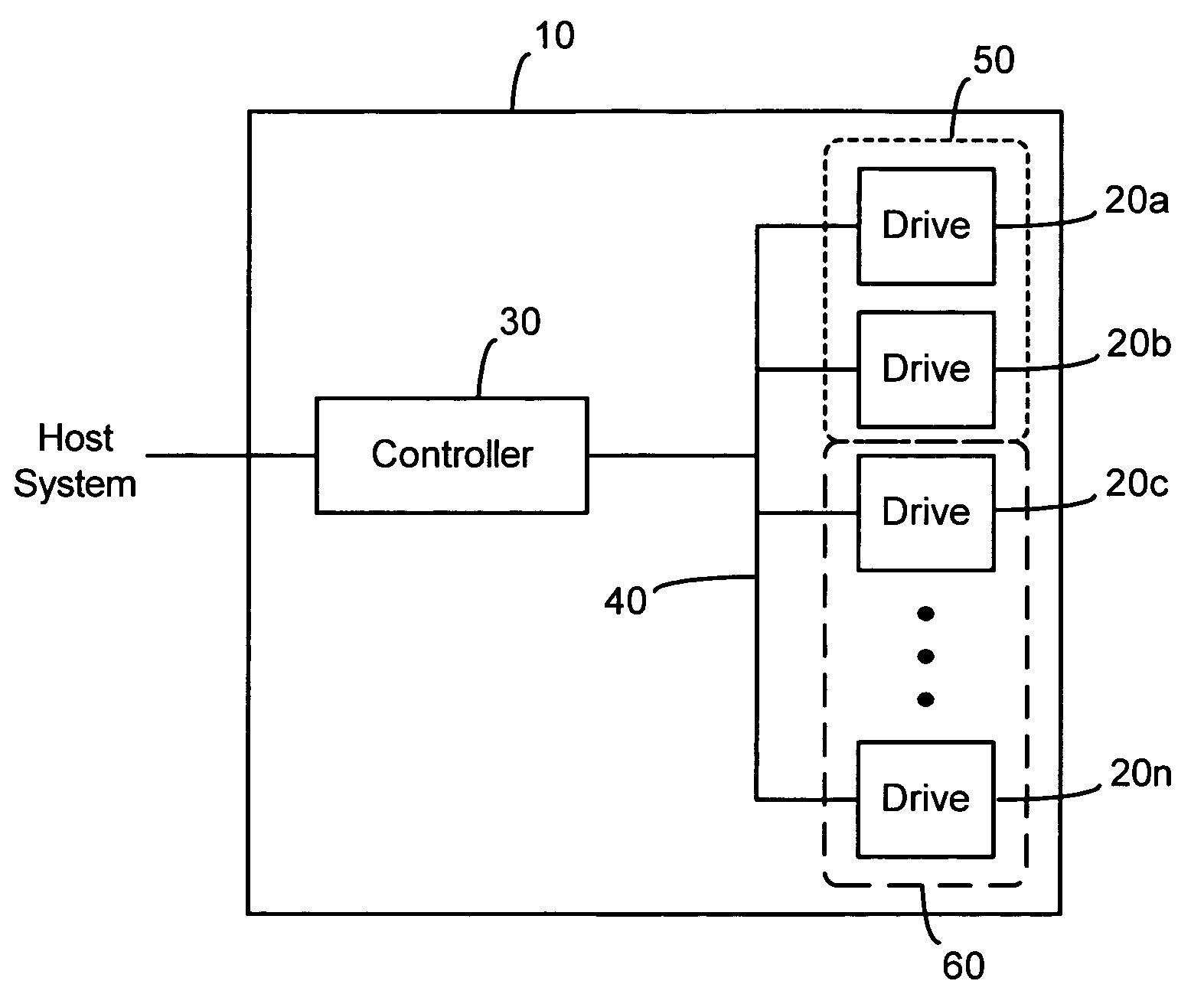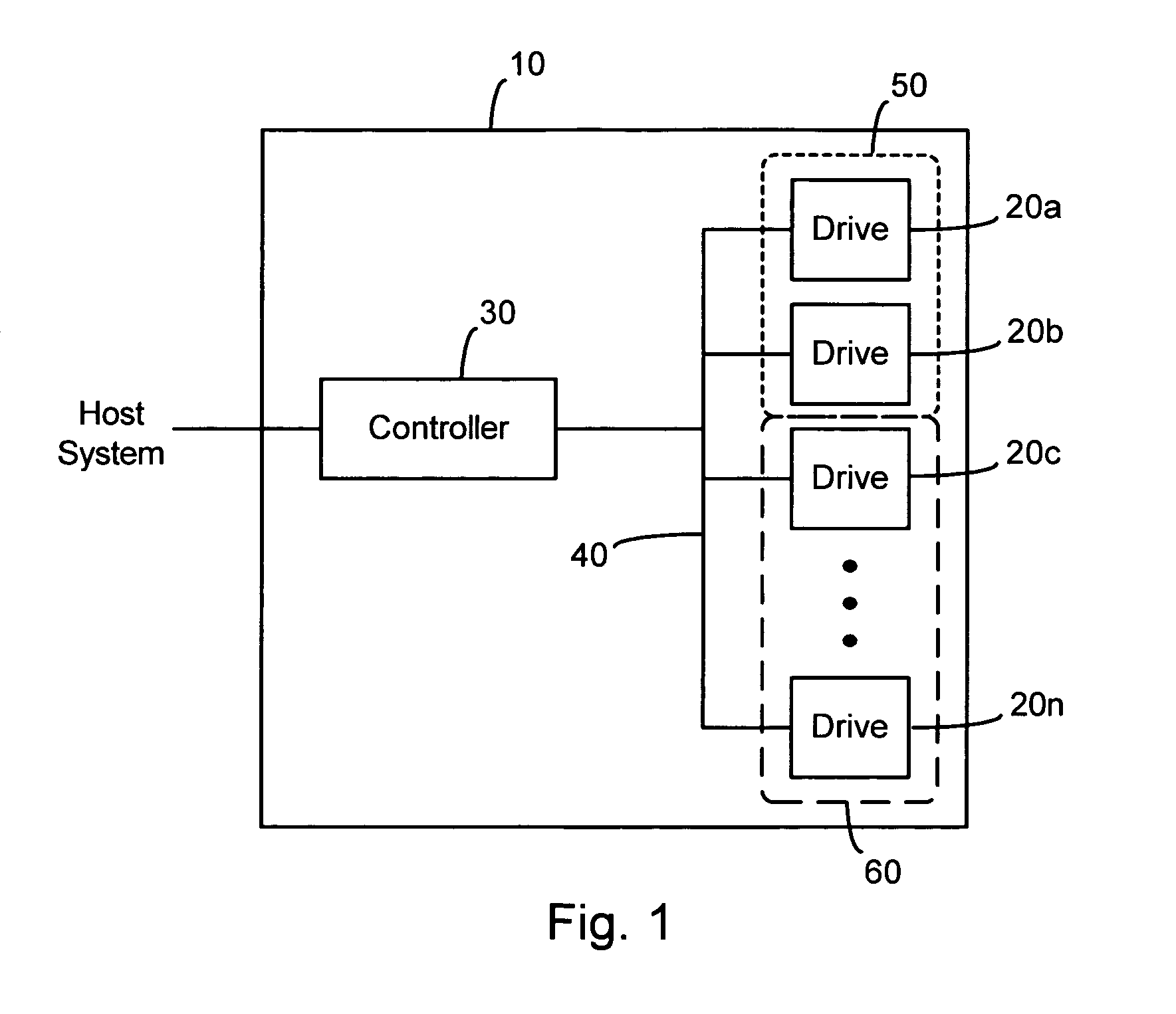Method and apparatus for power-efficient high-capacity scalable storage system
a storage system and high-capacity technology, applied in the field of data storage systems, can solve the problems of disk system access times and throughput far greater than tape system performance, and the cost differential between disk and tape device on per unit storage is rapidly decreasing,
- Summary
- Abstract
- Description
- Claims
- Application Information
AI Technical Summary
Benefits of technology
Problems solved by technology
Method used
Image
Examples
Embodiment Construction
[0048]One or more embodiments of the invention are described below. It should be noted that these and any other embodiments described below are exemplary and are intended to be illustrative of the invention rather than limiting.
[0049]As described herein, various embodiments of the invention comprise systems and methods for providing scalable, reliable, power-efficient, high-capacity data storage, wherein large numbers of closely packed data drives having corresponding data storage drives are individually powered on and off, depending upon their usage requirements.
[0050]In one embodiment, the invention is implemented in a RAID-type data storage system. This system employs a large number of hard disk drives. When data is written to the system, the data is written to one or more of the disk drives. Metadata and parity information corresponding to the data are also written to one or more of the disk drives to reduce the possibility of data being lost or corrupted. The manner in which da...
PUM
 Login to View More
Login to View More Abstract
Description
Claims
Application Information
 Login to View More
Login to View More - R&D
- Intellectual Property
- Life Sciences
- Materials
- Tech Scout
- Unparalleled Data Quality
- Higher Quality Content
- 60% Fewer Hallucinations
Browse by: Latest US Patents, China's latest patents, Technical Efficacy Thesaurus, Application Domain, Technology Topic, Popular Technical Reports.
© 2025 PatSnap. All rights reserved.Legal|Privacy policy|Modern Slavery Act Transparency Statement|Sitemap|About US| Contact US: help@patsnap.com



